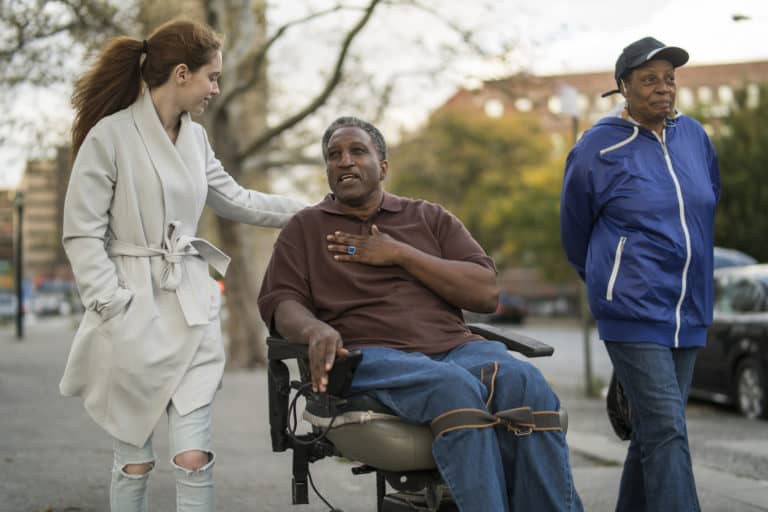CalAIM and SDOH: The Crossroad for Complex Care Needs
Enhanced Care Management and Community Supports are Pillars of CalAIM
THE VBP Blog

The CalAIM program was approved by the Centers for Medicare & Medicaid Services (CMS) for a five-year extension in December of 2021, as we mentioned in our last blog on CalAIM. CalAIM will shift Medi-Cal to a population health approach.
There are several unique aspects to CalAIM, including the prioritization of prevention, how it addresses complex health needs, and how social determinants of health (SDoH) are incorporated into care plans. In this blog, we will delve into some of the nuances and unique features of CalAIM.
Enhanced Care Management Addresses Complex Health Needs
Enhanced Care Management addresses both the clinical and non-clinical needs of the highest-need enrollees. This will be done through extensive coordination of health and health-related services. The goal is to break down traditional walls of health care so services will be provided wherever the enrollee is, whether that is in a shelter, on the street, at home, or in a doctor’s office.
ECM will be available to specific “populations of focus,” including:
- Individuals and families experiencing homelessness.
- Adults, youth, and children who are high utilizers of avoidable emergency department, hospital, or short-term skilled nursing facility services.
- Adults with serious mental illness or substance use disorder.
- Children and youth with serious emotional disturbance, identified to be at clinical high risk for psychosis or experiencing a first episode of psychosis.
- Adults and youth who are incarcerated and transitioning to the community.
- Adults at risk of institutionalization and eligible for long-term care.
- Adult nursing facility residents transitioning to the community.
- Children and youth enrolled in CCS with additional needs beyond CCS.
- Children and youth involved in child welfare
These enrollees will also have access to Community Supports if necessary. A single Enhanced Care Manager will coordinate among the physical, behavioral, dental, developmental, and social services delivery systems. This will help ensure that enrollees get the right care at the right time.
Community Supports Incorporate SDoH into Care Plans
CalAIM goes beyond traditional health care. It also addresses social determinants of health. The World Health Organization (WHO), defines SDoH as, “the conditions in which people are born, grow, work, live, and age, and the wider set of forces and systems shaping the conditions of daily life.” They are non-medical factors and forces that can influence health, including economic stability, physical environment, education, food, social and community context, and access to health care.
California recognizes that Medi-Cal enrollees with complex health needs and unmet social needs face a higher risk of hospitalization, institutionalization, and other higher-cost services. By addressing unmet social needs through Community Supports, CalAIM seeks to improve health outcomes and promote health equity.
Community Supports, also known as In Lieu of Services (ILoS), are new statewide services provided by Medi-Cal managed care plans. They are provided as cost-effective alternatives to traditional medical services and are designed to address social determinants of health.
The idea isn’t new. Community Supports are simply scaling up already existing work and programs, including Whole Person Care Pilots, the Health Homes Program, and Home and Community Based Service Waivers. However, in tying administration to managed care plans and addressing complex social needs like housing transition, addiction, and aging at home, CalAIM truly strives to provide wraparound whole-person care.

All of the Medi-Cal managed care plans are able to offer as many of the 14 Community Supports shown above as possible, and the CMS proposal even includes $4.3 billion in funding for California’s Home and Community Based Services (HCBS). Whether someone needs housing support, medically tailored meals, or home modifications, a Community Supports navigator can help ensure they receive the services they need.
Advocates Perspective
CalAIM is unique in many aspects, but we love to see how whole-person care is being incorporated into care plans. By extending supports and services outside health care settings and coordinating with social services, all of the issues affecting an individual’s health can be addressed so better health outcomes can be achieved. We will keep an eye on California to see how the shift is progressing and whether or not this will be a good model for other states in the future.
Onward!
Share This Blog!
Get even more insights on Linkedin & Twitter

About the Author
Fady Sahhar brings over 30 years of senior management experience working with major multinational companies including Sara Lee, Mobil Oil, Tenneco Packaging, Pactiv, Progressive Insurance, Transitions Optical, PPG Industries and Essilor (France).
His corporate responsibilities included new product development, strategic planning, marketing management, and global sales. He has developed a number of global communications networks, launched products in over 45 countries, and managed a number of branded patented products.

About the Co-Author
Mandy Sahhar provides experience in digital marketing, event management, and business development. Her background has allowed her to get in on the ground floor of marketing efforts including website design, content marketing, and trade show planning. Through her modern approach, she focuses on bringing businesses into the new digital age of marketing through unique approaches and focused content creation. With a passion for communications, she can bring a fresh perspective to an ever-changing industry. Mandy has an MBA with a marketing concentration from Canisius College.